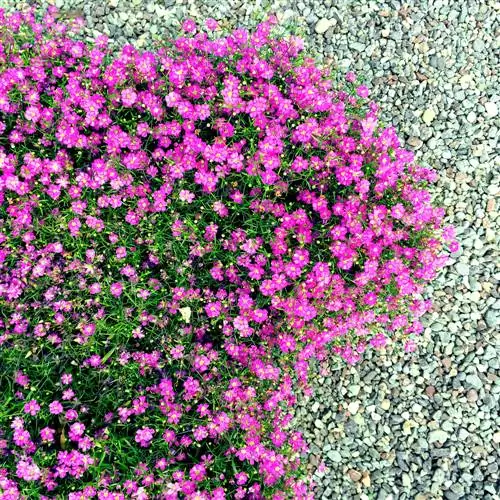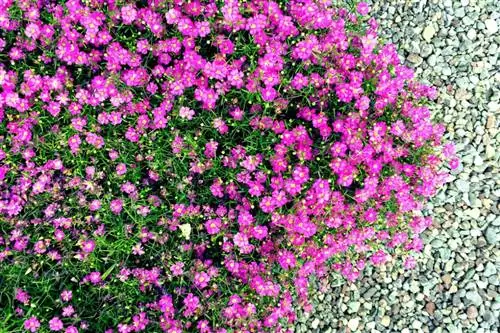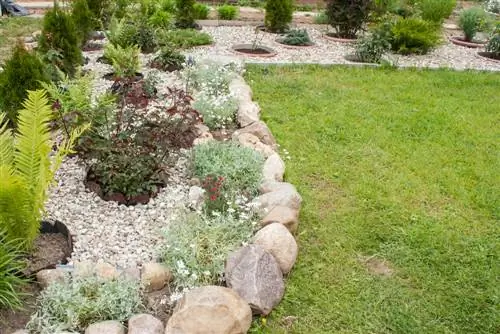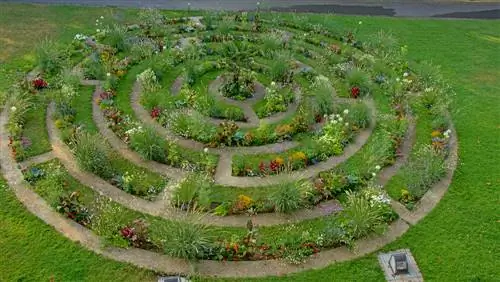- Author admin [email protected].
- Public 2023-12-16 16:46.
- Last modified 2025-01-23 11:21.
A colorful flowerbed should lighten up the garden and draw the viewer's eye. The perennials help to structure the garden and create visual highlights. However, perennial beds require a lot of work, which can be reduced significantly by creating a gravel bed. You can find out how you can make a gravel bed attractive and which plants feel comfortable there in the following article.

How to design a flower bed with gravel?
You can create an attractive gravel bed by choosing a sunny location, laying a weed fleece, spreading a layer of gravel over it and combining drought-tolerant perennials such as lavender, roses, peonies, carnations, rue or ornamental onions. Pay attention to different flowering times for long-lasting colors.
Plan and prepare
The first step is to find a suitable location and select the right plants. The optimal place for a gravel bed should be sunny, as drought-tolerant perennials in particular thrive here - which in turn need a lot of sun. The soil should have a high clay content, but at the same time be permeable and loose. If this is not the case, add a drainage layer before planting and improve the excavation with plenty of sand and compost. Lay a weed fleece over it (€19.00 on Amazon), which prevents the growth of weeds. Don't forget to cut planting holes for the planned perennial plantings! Only lay the gravel layer on this fleece.
Which perennials and plants belong in the gravel bed?
You can combine semi-dwarf and dwarf shrubs as well as ornamental grasses with tall and short perennials according to your taste. Mediterranean plants such as lavender, but also roses, peonies, carnations, rhombuses and ornamental onions look particularly striking in the gravel bed. Basically, whatever you like is allowed - the plants should only fit the location. If you also pay attention to different flowering times, you can enjoy the colorful splendor of colors for many months.
Planting and caring for it
Once created, a gravel bed requires very little work. You should only water and fertilize it occasionally according to the water and nutrient needs of the plants. Watering also has the pleasant side effect of removing any dirt that may adhere to the stones. The gravel should also be moved regularly, whereby you can loosen the soil underneath to improve ventilation. Because gravel weathers, you should also replace it about every three to five years.
Tip
Instead of gravel, you can also use other rock material and mulching material such as bark mulch. These also suppress the growth of weeds.






